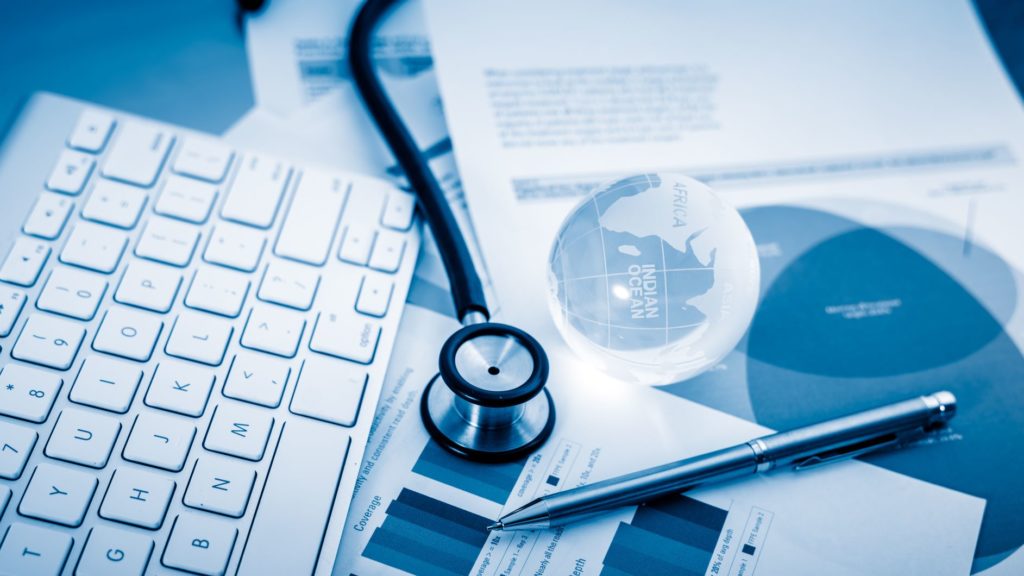
Medical device sales is a fast-paced industry with new trends and technology constantly emerging. To succeed, medical suppliers need to adopt a comprehensive sales strategy that allows them to utilize multiple platforms and channels to interact with customers.
In 2019, medical device sales increased 5.5% resulting in over 450 billion dollars in revenue. Due to increased health concerns in 2020, medical suppliers have a unique opportunity to provide healthcare facilities with the necessary tools to increase revenue.
What’s the key to amplifying your bottom line next year? Building a sales cycle that drives results. Let’s take a look at what factors impact a medical device sales cycle and how you can optimize your process to increase your bottom line.
How Do You Build a Medical Device Sales Cycle?
77% of healthcare buyers said their latest purchase was difficult and complex. For your sales cycle to be effective, you need to develop a comprehensive communication and marketing strategy at each stage to increase conversions.
The first step is mapping out your ideal customer journey to understand your strengths and gaps. To get started, consider the following steps when developing your journey map:
- Identify your customer’s goals and where your value intersects as a solution
- Assess all your communication touchpoints throughout your customer’s pre-decision, purchase, and post-close phases (i.e., search ads, case studies, presentation, or follow-up call).
- Understand your customer’s needs and pain points
- Experience the full customer journey yourself by working through every stage
- Develop a visual customer journey map
5 Factors that Impact the Medical Device Sales Cycle
Even when you map out your ideal customer journey, it’s important to recognize that certain factors impact its overall effectiveness. Here are the elements you need to optimize your sales cycle:
1.Right Audience Targeting
When it comes to your sales cycle, you need to attract the right qualifying target audience to ensure you’re not wasting time on leads who are unlikely to make a purchase. To narrow down your target audience, build robust buyer personas based on quantitative and qualitative data such as surveys, focus groups, and analytics data. Buyer personas will help you determine your most qualified prospects and prioritize your lead generation resources on those who will result in higher conversion rates and retention.
2.On-Point Messaging
Only 66% of marketers develop content that meets their audience’s needs. Your messaging throughout the sales cycle can have a large impact on whether or not a lead commits to a purchase decision. Throughout each stage, your messaging needs to be consistent, educational, and persuasive enough to land the sale.
Develop unique messaging and content that supports your audience’s needs and pain points for the following actions points:
Your sales strategy is all about reaching your audience at the right time. If you’re too late, you could potentially miss the sale to a competitor. Too soon, and you might come off too pushy. By using marketing automation technology, you can deliver messaging based on when your leads take an action throughout the sales cycle.
- Lead prospecting
- Cold calling
- Setting up an appointment
- Closing the sale
- Asking for referrals
3.Quick Automated Technology
Tied to the customer relationship manager (CRM), create email triggers as welcome emails, follow-ups, consultation requests, and more. You can also send valuable incentives closer to closing to sweeten the deal.
4.Comprehensive Sales Distributor Training
Distributors are a huge part of developing a successful buying cycle. You need to not only train new distributors with an effective onboarding program, but also empower them with best practices, resources, and knowledge so they can identify growth opportunities. Additionally, to keep your distributors engaged, consider incentivizing their sales and offering additional benefits when they meet your business goals. If you fail to educate your distributors, they’re unable to advocate your brand to their healthcare facilities.
5.Performance Analytics
To build an agile sales cycle, it’s crucial to have your eyes on real-time performance at all times. Analytics will give you visibility into what’s working in your customer journey and what isn’t — allowing you to improve any underperforming stages. You’ll need to monitor the following features:
- Form fills
- Email open rates
- Appointments made
- In-person visits
- Presentations given
- Conversion rates
- Dollars closed by each sales rep
Optimize Your Medical Device Sales Cycle to Increase Conversion Rates
If you’re looking to optimize your customer journey and increase conversion rates, it’s crucial to have a comprehensive understanding of your medical device sales cycle. By understanding and reacting to your customer needs, you’ll be able to effectively interact with them throughout every stage to build long-term loyalty.
Contact Share Moving Media today to improve your sales cycle process with content development.